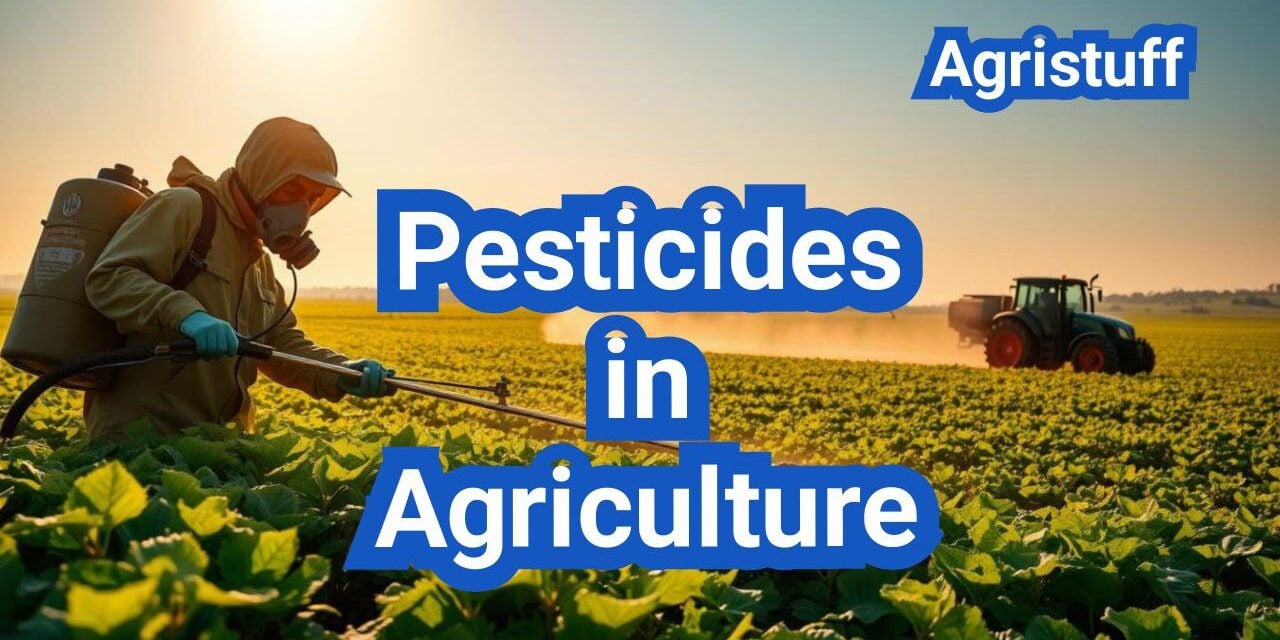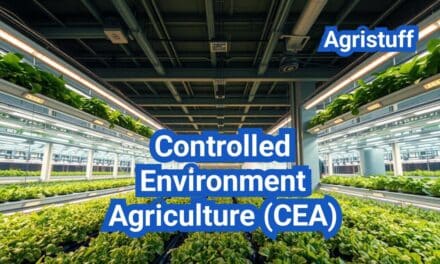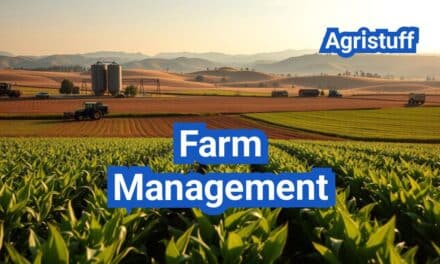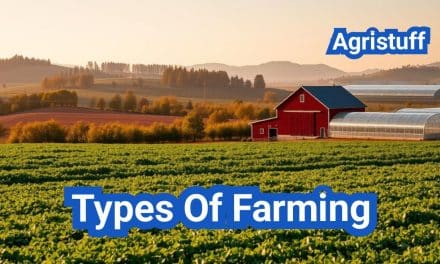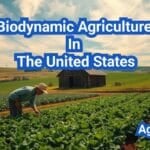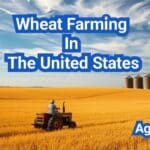The use of pesticides in agriculture is a critical component of modern farming, enabling the control of pests and diseases that can significantly reduce crop yields. However, the application of these chemicals must be carried out with caution to ensure pesticide safety and minimize environmental impact.
Understanding pesticide labels is essential for their safe and effective use. These labels contain vital information on handling, storage, and disposal, as well as instructions for application rates and timing. Moreover, resistance stewardship practices are crucial to prevent the development of pesticide-resistant pest populations, thereby sustaining the efficacy of available pest control measures.
Key Takeaways
- Types of Pesticides Used in Agricultural Settings
- Safe use of pesticides is crucial for minimizing environmental impact.
- Pesticide labels provide critical information for handling and application.
- Resistance stewardship is key to maintaining pesticide efficacy.
- Understanding pesticide regulations is essential for compliance.
- Proper training is necessary for those handling pesticides.
The Role of Pesticides in Agriculture
Modern farming relies heavily on pesticides to maintain crop health and productivity, ensuring food security for the growing global population. Pesticides play a crucial role in controlling pests that can damage crops, reduce yields, and affect food quality.
Definition and Importance in Modern Farming
Pesticides are substances used to control pests, including insects, weeds, and diseases that can harm crops. The importance of pesticides in modern farming cannot be overstated, as they help to:
- Protect crops from damage caused by pests
- Increase crop yields and improve food quality
- Reduce the economic impact of pest infestations on farmers
- Ensure food security by maintaining a stable food supply
Historical Development of Agricultural Pesticides
The use of pesticides in agriculture has a long history that dates back to ancient civilizations. Early farmers used various methods to control pests, including:
- Using natural substances like sulfur and copper
- Implementing cultural practices such as crop rotation
- Employing biological controls like introducing beneficial insects
The development of synthetic pesticides in the 20th century revolutionized pest control in agriculture. Modern pesticides are more targeted and effective, with many being designed to have minimal environmental impact.
Current Usage Statistics in US Agriculture
Pesticide use is widespread in US agriculture, with various types being applied across different crops. Some key statistics include:
- Herbicides account for the largest share of pesticide use, followed by insecticides and fungicides
- Corn and soybeans are among the crops that receive the most pesticide applications
- The use of genetically modified crops has influenced pesticide application patterns
Understanding these statistics is crucial for assessing the impact of pesticides on the environment, human health, and the agricultural economy.
Types of Pesticides Used in Agricultural Settings

Effective pest management in agriculture relies on understanding the different types of pesticides and their applications. Agricultural settings utilize a variety of pesticides to control pests, diseases, and weeds that can significantly impact crop yields and quality.
Insecticides: Targeting Harmful Insects
Insecticides are a crucial category of pesticides used to control insects that can damage crops. These can be further divided into subcategories such as organophosphates, pyrethroids, and neonicotinoids, each with different modes of action and target insects.
Herbicides: Managing Weeds and Unwanted Plants
Herbicides are used to manage weeds that compete with crops for water, nutrients, and light. They can be selective, targeting specific weed species, or non-selective, killing a broader range of plants. Glyphosate and glufosinate are examples of widely used herbicides.
Fungicides: Controlling Fungal Diseases
Fungicides are essential for controlling fungal diseases that can devastate crops. They can be protectant or systemic, with some fungicides being used to treat existing infections while others are applied preventively to protect crops.
Other Categories: Rodenticides, Nematicides, and More
Beyond the main categories, other types of pesticides include rodenticides for controlling rodents, nematicides for managing nematode populations, and molluscicides for controlling slugs and snails. Each of these plays a vital role in comprehensive pest management strategies.
Understanding the different types of pesticides and their specific uses is crucial for effective and responsible pest management in agricultural settings. By selecting the appropriate pesticide for a particular pest problem, farmers can protect their crops while minimizing environmental impact.
Conventional vs. Organic Pesticides for Agriculture
Conventional and organic pesticides represent two distinct approaches to managing pests in agriculture, differing in composition, application, and environmental footprint. The choice between these two categories is crucial for farmers, policymakers, and consumers alike, as it impacts not only crop yields but also environmental sustainability and human health.
Synthetic Chemical Pesticides
Synthetic chemical pesticides are widely used in conventional agriculture due to their effectiveness against a broad range of pests. These pesticides are often chemically formulated to target specific pests, offering a quick and efficient solution for pest management. However, their use has raised concerns regarding environmental pollution, health risks, and the development of pesticide resistance.
- Effective against a wide range of pests
- Quick action and high efficacy
- Potential for environmental and health impacts
- Risk of developing pesticide resistance
USDA-Approved Organic Pesticide Options
USDA-approved organic pesticides are derived from natural sources and are considered a more environmentally friendly alternative to synthetic chemical pesticides. These include substances like copper, sulfur, and neem oil, which are used to control pests without the harsh environmental impacts associated with synthetic chemicals.
- Copper-based fungicides
- Sulfur for controlling fungal diseases
- Neem oil for managing a wide range of pests
Biopesticides and Natural Alternatives
Biopesticides and natural alternatives represent a growing segment of the pesticide market, offering targeted pest control with minimal environmental impact. Biopesticides include microbial pesticides, plant-incorporated protectants, and biochemical pesticides. These products are generally more specific to target pests and have a lower risk of harming non-target organisms compared to conventional chemical pesticides.
| Type | Description | Examples |
|---|---|---|
| Microbial Pesticides | Contain microorganisms that control pests | Bacillus thuringiensis |
| Plant-Incorporated Protectants | Genetic material introduced into plants to produce a pesticide | Genetically modified crops |
| Biochemical Pesticides | Natural substances that control pests through non-toxic mechanisms | Pheromones, plant extracts |
The Pros and Cons of Pesticides in Agriculture

Agricultural pesticides are vital for crop protection, yet they also pose environmental and health concerns. The use of these chemicals in farming has been a longstanding practice aimed at controlling pests and diseases that can devastate crops. However, the benefits of pesticides must be weighed against their potential drawbacks.
Benefits: Yield Protection and Food Security
Pesticides play a crucial role in protecting crops from pests and diseases, thereby ensuring yield protection and contributing to global food security. By controlling harmful insects, weeds, and fungal diseases, pesticides help farmers maintain healthy crops and achieve higher productivity.
- Yield Protection: Pesticides help in reducing crop loss due to pests, thereby protecting the yield and ensuring that more food is available for consumption.
- Food Security: By enhancing crop yields and reducing losses, pesticides contribute significantly to food security, especially in regions with high population growth or where food scarcity is a concern.
Drawbacks: Environmental and Health Concerns
Despite their benefits, pesticides also have significant environmental and health drawbacks. The use of chemical pesticides can lead to environmental pollution, harm non-target species, and pose health risks to humans and animals.
- Environmental Impact: Pesticides can contaminate soil, water, and air, leading to long-term ecological damage. They can also affect non-target species, including beneficial insects like bees.
- Health Risks: Exposure to pesticides has been linked to various health problems, including neurological disorders, reproductive issues, and certain types of cancer.
Finding the Right Balance in Pest Management
Achieving a balance between the benefits and drawbacks of pesticides is crucial for sustainable agriculture. This involves adopting integrated pest management (IPM) strategies that combine chemical control with other methods such as cultural, biological, and physical controls.
- Integrated Pest Management (IPM): IPM involves using a combination of techniques to manage pests in an environmentally friendly and sustainable way.
- Sustainable Practices: Promoting sustainable agricultural practices, such as crop rotation, biological control, and the use of resistant crop varieties, can reduce reliance on chemical pesticides.
Essential Pesticide Safety Training for Agricultural Workers
To protect themselves and the environment, agricultural workers need thorough pesticide safety training. This training is not just a regulatory requirement but a critical component in ensuring the safe handling and application of pesticides.
Required Training Under the Worker Protection Standard
The Worker Protection Standard (WPS) mandates specific training for agricultural workers who handle pesticides. This training covers crucial information such as the safe handling of pesticides, understanding label instructions, and knowing what to do in case of an emergency. The WPS requires that this training be provided annually, ensuring that workers are always up-to-date with the latest safety protocols.
Key components of WPS training include:
- Understanding the hazards associated with pesticide exposure
- Knowledge of safety measures to prevent exposure
- First aid and emergency response procedures
- Information on the safe use of personal protective equipment (PPE)
Proper Handling and Application Techniques
Proper handling and application techniques are vital in minimizing exposure to pesticides. Agricultural workers must be trained on how to correctly mix, load, and apply pesticides, as well as how to clean and maintain application equipment. This training helps prevent accidental releases and ensures that pesticides are used effectively.
“The way pesticides are handled and applied can significantly impact the risk of exposure to workers and the environment.”
Understanding Exposure Routes and Prevention
Understanding how pesticide exposure occurs is crucial for preventing it. Exposure can happen through skin contact, inhalation, or ingestion. Agricultural workers must be trained to recognize these risks and take appropriate measures to minimize them, such as wearing PPE, following label instructions, and practicing good hygiene.
“Pesticide safety is everyone’s responsibility. By understanding the risks and taking proactive steps, we can protect our health and the environment.”
— EPA Guidelines
By emphasizing pesticide safety training, agricultural workers can better protect themselves and the environment from the potential hazards associated with pesticide use.
How to Read and Understand Pesticide Labels
The key to safe pesticide use lies in comprehending the label. Pesticide labels are designed to provide critical information for the safe and effective use of these products. Understanding the various elements of a pesticide label is essential for agricultural workers, applicators, and anyone involved in pesticide handling.
Required Label Elements and Their Meaning
Pesticide labels contain several required elements that provide important information about the product. These elements include the product name, ingredients, signal words, hazard statements, and application instructions. The product name and ingredients are crucial for identifying the pesticide and understanding its composition.
The label also includes information on the signal words and hazard statements, which indicate the level of toxicity and potential hazards associated with the product. Signal words such as “Danger,” “Warning,” and “Caution” alert users to the potential risks.
Signal Words and Hazard Statements
Signal words are an essential part of the pesticide label, as they convey the level of toxicity and potential hazard. The signal words used on pesticide labels are:
- Danger: Highly toxic; may be fatal if swallowed, inhaled, or absorbed through the skin.
- Warning: Moderately toxic; may cause serious health issues.
- Caution: Slightly toxic; may cause minor health issues or irritation.
Hazard statements provide additional information about the potential hazards and risks associated with the pesticide. These statements may include information on environmental hazards, toxicity to certain organisms, and other safety concerns.
Application Rates and Mixing Instructions
The pesticide label provides detailed application rates and mixing instructions to ensure that the product is used effectively and safely. Application rates specify the amount of pesticide to be applied per acre or other unit of area, while mixing instructions outline how to prepare the pesticide for application.
Following these instructions carefully is crucial to avoid over-application, which can lead to environmental contamination and increased costs, or under-application, which can result in reduced efficacy.
By understanding and following the information on pesticide labels, users can minimize risks to themselves, others, and the environment, while ensuring effective pest control.
Personal Protective Equipment (PPE) for Pesticide Handlers

Pesticide handlers must wear Personal Protective Equipment (PPE) as specified on the product label to minimize exposure risks. The selection and proper use of PPE are crucial in preventing pesticide-related illnesses and injuries.
Required PPE Based on Label Requirements
The pesticide label provides detailed information on the required PPE for safe handling. This may include:
- Gloves: Typically made of materials like nitrile or rubber, these protect hands from direct contact with pesticides.
- Coveralls or Protective Clothing: These prevent skin contact and are often required for mixing and applying pesticides.
- Eye Protection: Goggles or face shields protect the eyes from splashes or spills.
- Respiratory Protection: Masks or respirators are used to prevent inhalation of pesticide fumes or particles.
It’s essential to read and follow the label instructions carefully to ensure the correct PPE is worn.
Selection, Maintenance, and Proper Use
Selecting the right PPE involves considering the type of pesticide being used, the method of application, and the potential exposure routes. Regular maintenance of PPE is also critical:
- Inspect PPE before each use for signs of wear or damage.
- Clean PPE according to the manufacturer’s instructions after each use to prevent the buildup of pesticide residues.
- Store PPE in a well-ventilated area away from pesticide storage to prevent contamination.
Proper use of PPE includes wearing it correctly and ensuring it fits properly to prevent exposure.
Decontamination Procedures
Decontamination is a critical step in preventing the spread of pesticide residues. Procedures include:
- Washing Hands and Face: Thoroughly wash with soap and water after handling pesticides and before eating, drinking, or using the restroom.
- Showering and Changing Clothes: As soon as possible after completing pesticide application tasks.
- Cleaning Equipment and PPE: Regularly clean and decontaminate equipment and PPE to prevent residue buildup.
By following these guidelines and using the appropriate PPE, pesticide handlers can significantly reduce their risk of exposure to harmful chemicals.
Regulatory Framework and Residue Management
Understanding the regulatory framework surrounding pesticide use is crucial for agricultural compliance. The Environmental Protection Agency (EPA) plays a central role in regulating pesticides, ensuring that their use does not harm human health or the environment.
EPA Registration and Tolerance Levels
The EPA regulates pesticides through a registration process, which involves evaluating the safety and efficacy of pesticide products. Tolerance levels are established for pesticide residues on crops to ensure that exposure to these residues does not pose a risk to human health. These tolerance levels are critical in maintaining food safety.
Tolerance levels are the maximum amount of a pesticide residue that is allowed on a crop. The EPA sets these levels based on extensive toxicological data and exposure assessments. Farmers and agricultural businesses must adhere to these tolerance levels to avoid legal and health risks.
Restricted Use Pesticides: Requirements and Certification
Some pesticides are classified as Restricted Use Pesticides (RUPs) due to their potential to cause harm to humans, wildlife, or the environment. The use of RUPs requires special certification, ensuring that applicators understand the risks and take necessary precautions.
To become certified, applicators must undergo training that covers the safe handling, application, and disposal of RUPs. This certification process is crucial for minimizing the risks associated with these potent pesticides.
Pesticide Residue Testing Procedures
Pesticide residue testing is a critical component of ensuring compliance with tolerance levels. Testing involves collecting crop samples and analyzing them for pesticide residues using sophisticated laboratory techniques.
The results of these tests help farmers and regulators monitor pesticide use and ensure that residues are within acceptable limits. Advanced testing methods, such as gas chromatography and mass spectrometry, are used to detect even trace amounts of pesticide residues.
Using Bulletins Live Two for Local Restrictions
Bulletins Live Two (BLT) is an EPA tool that provides location-specific information on pesticide use restrictions. It helps applicators comply with local regulations and avoid potential environmental hazards.
By accessing BLT, users can obtain information on specific restrictions in their area, ensuring that they apply pesticides in a manner that is safe for the local environment and population.
Integrated Pest Management (IPM) and Pesticide Use

Integrated Pest Management (IPM) is an ecosystem-based strategy that focuses on long-term prevention of pests or damage through a combination of techniques. This approach aims to manage pest populations at levels that do not cause significant economic loss, while minimizing risks to human health and the environment.
Establishing Economic Thresholds for Treatment
One of the core principles of IPM is establishing economic thresholds for treatment. This involves determining the pest density at which control measures become necessary to prevent economic loss. By setting these thresholds, farmers can avoid unnecessary pesticide applications, reducing both costs and environmental impact.
The process of establishing economic thresholds requires careful consideration of several factors, including:
- The type and severity of the pest infestation
- The potential impact on crop yield and quality
- The cost and effectiveness of available control measures
Scouting and Monitoring Techniques | Pesticides in Agriculture
Effective scouting and monitoring are crucial components of IPM. Regular field inspections allow farmers to detect pest issues early, track population dynamics, and make informed decisions about control measures. Techniques may include visual inspections, the use of traps, and monitoring of environmental conditions that favor pest development.
For instance, sticky traps can be used to monitor for flying insects, while soil sampling can help detect pests that live underground. By combining multiple monitoring techniques, farmers can gain a more comprehensive understanding of pest pressures in their fields.
Combining Chemical and Non-Chemical Approaches
IPM emphasizes the integration of chemical and non-chemical control methods to achieve sustainable pest management. Non-chemical approaches may include cultural controls (such as crop rotation and sanitation), biological controls (like introducing beneficial insects), and physical controls (such as hand weeding or using barriers).
Chemical controls, when necessary, should be selected based on their efficacy, safety, and potential environmental impact. The goal is to use pesticides judiciously, as part of a broader IPM strategy that prioritizes long-term sustainability over short-term fixes.
“The key to successful IPM is a combination of techniques that work together to manage pest populations effectively, while minimizing risks to people and the environment.” –
National Pest Management Association
By adopting IPM practices, farmers can reduce their reliance on chemical pesticides, decrease the risk of pesticide resistance, and contribute to a more sustainable agricultural system.
Managing Pesticide Resistance in Agricultural Systems

Managing pesticide resistance is essential for the long-term sustainability of agricultural practices. Pesticide resistance occurs when pests evolve to withstand the chemicals designed to control them, rendering these chemicals ineffective.
Herbicide Resistance Management Strategies
Herbicide resistance is a growing concern in agriculture. Strategies to manage herbicide resistance include rotating herbicides with different modes of action, using herbicide mixtures, and implementing cultural practices that reduce weed pressure.
- Rotating herbicides with different modes of action
- Using herbicide mixtures
- Implementing cultural practices that reduce weed pressure
Insecticide Resistance Management and IRAC Groups | Pesticides in Agriculture
Insecticide resistance management is critical for controlling insect pests. The Insecticide Resistance Action Committee (IRAC) provides guidelines and categorizes insecticides into groups based on their mode of action.
Key strategies include rotating insecticides among different IRAC groups, using insecticide mixtures with different modes of action, and implementing integrated pest management (IPM) practices.
- Rotating insecticides among different IRAC groups
- Using insecticide mixtures with different modes of action
- Implementing integrated pest management (IPM) practices
Fungicide Resistance Management and FRAC Codes | Pesticides in Agriculture
Fungicide resistance management is vital for disease control. The Fungicide Resistance Action Committee (FRAC) categorizes fungicides based on their mode of action and provides resistance management guidelines.
Effective strategies involve rotating fungicides with different FRAC codes, using fungicide mixtures with different modes of action, and applying fungicides at recommended rates and timing.
- Rotating fungicides with different FRAC codes
- Using fungicide mixtures with different modes of action
- Applying fungicides at recommended rates and timing
By adopting these strategies, farmers can prolong the effectiveness of pesticides and maintain crop yields.
Proper Pesticide Application Techniques

Proper techniques in pesticide application are vital to ensure crop protection and minimize ecological impact. The effectiveness of pesticide application depends on several factors, including the calibration of equipment, the technology used to reduce drift, and an understanding of weather conditions.
Calibration of Field Sprayers for Accurate Application | Pesticides in Agriculture
Calibrating field pesticide sprayer is a critical step in ensuring that pesticides are applied accurately and efficiently. This process involves checking the sprayer’s output to ensure it matches the recommended application rate. Proper calibration helps in achieving uniform coverage, reducing waste, and minimizing the risk of over-application.
To calibrate a field sprayer, one must follow a series of steps:
- Check the sprayer’s nozzle output and ensure it’s within the manufacturer’s specifications.
- Measure the sprayer’s swath width and travel speed.
- Calculate the application rate based on the sprayer’s output and travel speed.
- Adjust the sprayer as necessary to achieve the desired application rate.
| Calibration Step | Description | Importance |
|---|---|---|
| Nozzle Output Check | Verify nozzle output against manufacturer’s specs | Ensures accurate application rate |
| Swath Width Measurement | Measure the width covered by the sprayer | Affects application rate and uniformity |
| Travel Speed Adjustment | Adjust the sprayer’s travel speed | Influences application rate and coverage |
Drift Reduction Technologies and Nozzle Selection | Pesticides in Agriculture
Drift reduction technologies play a crucial role in minimizing the off-target movement of pesticides. Drift reduction nozzles are designed to produce larger droplets, which are less susceptible to drift. Selecting the right nozzle type and size is essential for effective drift management.
The choice of nozzle can significantly impact drift potential. For example:
- Flat fan nozzles are commonly used for broad-spectrum spraying.
- Air induction nozzles are effective in reducing drift by producing larger droplets.
Weather Considerations and Temperature Inversions | Pesticides in Agriculture
Weather conditions, including wind speed, temperature, and humidity, significantly affect pesticide application. Temperature inversions, in particular, can lead to increased drift potential as they trap spray droplets close to the ground, preventing them from dispersing.
To mitigate the effects of weather conditions:
- Monitor weather forecasts before application.
- Avoid applying pesticides during temperature inversions or high winds.
- Consider using drift reduction technologies.
Environmental Stewardship in Pesticide Use

The use of pesticides in agriculture necessitates a careful approach to environmental stewardship to prevent adverse effects on non-target organisms and ecosystems. As the agricultural sector continues to evolve, the importance of balancing crop protection with ecological conservation becomes increasingly evident.
Protecting Pollinators During Pesticide Applications | Pesticides in Agriculture
Pollinators, such as bees and butterflies, play a crucial role in agricultural productivity. To protect these vital organisms, farmers can adopt several strategies, including:
- Choosing pesticides with lower toxicity to pollinators
- Avoiding application during peak pollinator activity
- Maintaining pollinator-friendly habitats near agricultural fields
Groundwater and Surface Water Protection Measures | Pesticides in Agriculture
Pesticides can potentially contaminate water bodies, posing risks to both human health and the environment. To mitigate this, several measures can be taken:
| Protection Measure | Description |
|---|---|
| Proper Pesticide Handling | Ensuring that pesticides are handled, mixed, and applied according to label instructions to minimize spills and runoff. |
| Buffer Zones | Establishing buffer zones around water bodies to prevent direct pesticide application into or near water. |
| Monitoring Water Quality | Regularly testing water sources for pesticide residues to identify potential contamination issues early. |
Reducing Off-Target Movement and Ecological Impact | Pesticides in Agriculture
Off-target movement of pesticides can lead to unintended ecological impacts, including harm to non-target species and ecosystems. Strategies to reduce this include:
- Using drift reduction technologies and appropriate nozzle selections
- Applying pesticides under favorable weather conditions
- Implementing integrated pest management (IPM) practices that combine chemical and non-chemical approaches
By adopting these environmental stewardship practices, farmers and agricultural practitioners can minimize the ecological footprint of pesticide use, contributing to a more sustainable agricultural future.
Pesticide Storage, Disposal, and Record Keeping

The safe handling of pesticides extends beyond application to include storage, disposal, and meticulous record keeping. Ensuring these aspects are managed properly is crucial for minimizing risks to human health and the environment.
Safe Storage Requirements and Best Practices | Pesticides in Agriculture
Safe storage of pesticides is fundamental to preventing accidents and environmental contamination. Pesticides should be stored in a dedicated area that is well-ventilated, secure, and away from living quarters and water sources. The storage facility should be designed to contain any potential spills, with containers kept tightly closed and labeled.
Key storage practices include:
- Storing pesticides in their original containers with labels intact.
- Keeping the storage area clean, dry, and well-ventilated.
- Ensuring that the storage facility is secure and inaccessible to children and unauthorized individuals.
- Regularly inspecting containers for signs of damage or deterioration.
Proper Disposal of Pesticides and Containers
Proper disposal of pesticides and their containers is critical to prevent environmental pollution and health hazards. Unused or surplus pesticides should be disposed of according to the label instructions or through approved waste disposal programs.
| Disposal Method | Description |
|---|---|
| Return to supplier | Unused pesticides can be returned to the supplier or manufacturer. |
| Approved waste disposal | Dispose of through programs approved by local or state authorities. |
| Container rinsing | Rinse containers according to label instructions and dispose of rinse water appropriately. |
Agricultural Pesticide Record Keeping Requirements
Maintaining accurate records of pesticide use is not only a regulatory requirement but also a best practice for managing pest resistance and ensuring safe pesticide use. Records should include details such as the date and time of application, location, pesticide used, application rate, and the name of the applicator.
Record keeping helps in:
- Tracking pesticide use history.
- Managing pest resistance.
- Demonstrating compliance with regulations.
- Facilitating audits and inspections.
Resources: NPIC Pesticide Hotline and Information Sources
For guidance on pesticide storage, disposal, and record keeping, resources such as the NPIC Pesticide Hotline are invaluable. The NPIC provides information and assistance on pesticide-related issues, including safety, regulatory compliance, and environmental stewardship.
Additional resources include:
- Local Cooperative Extension offices.
- Pesticide product labels and Safety Data Sheets (SDS).
- State pesticide regulatory agencies.
Emergency Response and First Aid for Pesticide Exposure
In the event of pesticide exposure, knowing the right first aid procedures can be lifesaving. Pesticide exposure can occur through various routes, including skin contact, inhalation, or ingestion, and it’s crucial to respond appropriately to minimize harm.
Recognizing Signs of Pesticide Poisoning
The symptoms of pesticide poisoning can vary depending on the type of pesticide, the level of exposure, and the individual. Common signs include nausea, dizziness, headache, and skin irritation. In severe cases, pesticide poisoning can lead to seizures, respiratory failure, or even death. It’s essential to be aware of these symptoms to provide timely intervention.
| Symptoms | Possible Causes | First Aid Response |
|---|---|---|
| Nausea, vomiting | Ingestion or inhalation of pesticides | Provide plenty of water; seek medical help |
| Skin irritation, rashes | Skin contact with pesticides | Wash affected area with soap and water; remove contaminated clothing |
| Respiratory distress | Inhalation of pesticide fumes | Move to fresh air; provide oxygen if available; seek medical help |
Immediate First Aid Procedures | Pesticides in Agriculture
When pesticide exposure occurs, immediate action is necessary. For skin exposure, wash the affected area thoroughly with soap and water. Remove any contaminated clothing to prevent further exposure. In cases of inhalation, move the individual to fresh air and provide oxygen if available. For ingestion, do not induce vomiting unless instructed by a medical professional.
When and How to Seek Medical Attention | Pesticides in Agriculture
After providing initial first aid, it’s crucial to seek medical attention promptly. Medical professionals can assess the severity of the exposure and provide appropriate treatment. It’s helpful to have information about the pesticide involved, including its label, to aid in medical treatment.
Reporting Pesticide Incidents
Reporting pesticide incidents is vital for regulatory agencies to track and prevent future exposures. Notify local authorities or the EPA as required by law. Reporting helps in identifying patterns of exposure and implementing measures to reduce risks associated with pesticide use.
By understanding the signs of pesticide poisoning, knowing first aid procedures, seeking medical attention when necessary, and reporting incidents, we can mitigate the risks associated with pesticide exposure and ensure a safer environment for agricultural workers and communities.
Responsible Use of Pesticides in Modern Agriculture
The responsible use of pesticides is crucial in modern agriculture, balancing productivity with environmental stewardship and human health protection. As discussed, pesticides play a vital role in maintaining crop yields and food security.
Sustainable practices, such as integrated pest management (IPM) and proper pesticide application techniques, are essential for minimizing the environmental impact of pesticide use. By adopting these practices, farmers can reduce the risk of pesticide resistance, protect pollinators, and prevent water contamination.
To achieve responsible pesticide use, it is vital to follow label instructions, use personal protective equipment (PPE), and maintain accurate records. Additionally, staying informed about the latest research and regulatory updates is critical for making informed decisions.
By prioritizing sustainable practices and responsible pesticide use, the agricultural industry can ensure a safer and more environmentally friendly food production system. This approach not only benefits farmers and the environment but also contributes to a healthier and more sustainable food supply for consumers.
FAQ
What are pesticides and why are they used in agriculture?
Pesticides are substances used to control pests, including insects, weeds, and diseases, that can damage crops and reduce yields. They are used in agriculture to protect crops, ensure food security, and maintain crop health.
What are the different types of pesticides used in agriculture?
The main types of pesticides used in agriculture are insecticides, herbicides, fungicides, rodenticides, and nematicides. Each type targets specific pests or diseases, and they can be used alone or in combination as part of an Integrated Pest Management (IPM) strategy.
What is the difference between conventional and organic pesticides?
Conventional pesticides are synthetic chemical pesticides, while organic pesticides are derived from natural sources and are approved by the USDA for use in organic farming. Organic pesticides can include biopesticides, which are made from living organisms or their byproducts.
What are the benefits and drawbacks of using pesticides in agriculture?
The benefits of pesticides include yield protection, food security, and reduced crop losses. However, the drawbacks include potential environmental and health concerns, such as pesticide residues on food, water contamination, and harm to beneficial organisms like pollinators.
What is pesticide safety training, and why is it important?
Pesticide safety training is required for agricultural workers who handle pesticides. It covers proper handling and application techniques, understanding exposure routes and prevention measures, and emergency response procedures. This training is essential to minimize the risks associated with pesticide use.
How do I read and understand a pesticide label?
A pesticide label contains critical information, including the product name, active ingredients, signal words, hazard statements, application rates, and mixing instructions. Understanding the label is crucial for safe and effective pesticide use.
What is Personal Protective Equipment (PPE), and why is it necessary for pesticide handlers?
PPE includes gloves, masks, eyewear, and other protective gear that prevents exposure to pesticides. The type and amount of PPE required depend on the pesticide label instructions and the specific task being performed.
What is Integrated Pest Management (IPM), and how does it relate to pesticide use?
IPM is a holistic approach to managing pests that combines physical, cultural, biological, and chemical controls. It aims to minimize pesticide use while maintaining effective pest control. IPM involves establishing economic thresholds, scouting and monitoring, and using a combination of control methods.
How can pesticide resistance be managed in agricultural systems?
Pesticide resistance management involves using a combination of strategies, including rotating pesticides with different modes of action, using non-chemical controls, and implementing cultural practices that reduce pest pressure. IRAC groups and FRAC codes help identify pesticides with different modes of action.
What are some best practices for pesticide application and environmental stewardship?
Best practices include calibrating field sprayers, using drift reduction technologies, and considering weather conditions to minimize off-target movement. Protecting pollinators, safeguarding groundwater and surface water, and reducing ecological impact are also essential for environmental stewardship.
How should pesticides be stored, disposed of, and recorded?
Pesticides should be stored in a secure, well-ventilated area, away from living quarters and water sources. Disposal should follow label instructions and local regulations. Accurate records of pesticide use, including application rates, dates, and locations, are essential for tracking and compliance.
What should I do in case of pesticide exposure or poisoning?
In case of pesticide exposure or poisoning, it is essential to recognize the signs and symptoms, provide immediate first aid, and seek medical attention if necessary. Reporting pesticide incidents is also crucial for tracking and prevention.
Conclusion of: Pesticides in Agriculture
Pesticides in agriculture are powerful tools that protect yield and quality, but they only work for you when you handle them safely, read labels precisely, and steward chemistries to slow resistance; the core principle is simple: the label is the law and your blueprint for legal, effective use of pesticides in agriculture. — EPA: Introduction to Pesticide Labels
What “pesticide” means (and why definitions matter)
Under FIFRA, pesticides in agriculture include substances used to prevent, destroy, repel, or mitigate pests, as well as plant regulators, defoliants, and desiccants—so if a product is labeled as a pesticide, it falls under specific federal rules that govern how pesticides in agriculture are purchased, stored, applied, and disposed. — Cornell Law: FIFRA §2 definitions
“Label is the law”: your first, last, and best instruction manual
Every label for pesticides in agriculture carries this statement: “It is a violation of Federal law to use this product in a manner inconsistent with its labeling,” which means your rates, timing, target site, and protective equipment are determined by the label—and that’s how pesticides in agriculture stay legal and effective. — EPA: Pesticide Labels Overview
How to read a label (and what the sections mean)
For pesticides in agriculture, learn to scan active ingredients, signal word, precautionary statements, first aid, directions for use, target pests, agricultural use requirements (WPS), and timing items like preharvest interval (PHI) and restricted-entry interval (REI) so you use pesticides in agriculture exactly as intended. — EPA Label Review Manual (Precautionary Statements)
Worker Protection Standard (WPS): people first, always
The WPS protects those who mix, load, and apply pesticides in agriculture and those who work in treated areas, requiring training, posting, decontamination supplies, emergency assistance, and access to application information so pesticides in agriculture don’t harm workers or handlers. — EPA: Agricultural Worker Protection Standard
Certification & RUPs: who can apply what
Some pesticides in agriculture are classified as Restricted Use Pesticides (RUPs) and may only be used by certified applicators or those under their supervision; check your state program for categories and exams so your use of pesticides in agriculture is fully compliant. — EPA: How to Get Certified
PPE & respirators: match protection to the label
Labels for pesticides in agriculture specify minimum personal protective equipment—gloves, coveralls, eye protection, and sometimes respirators that require medical clearance, fit testing, and training—so your program for pesticides in agriculture should never go below label minimums. — PERC: Respirator Safety for Pesticide Handlers
PHI, REI, and posting: timing is safety
Following PHIs keeps residues within legal limits and following REIs keeps workers out of treated areas until it’s safe; both are essential when using pesticides in agriculture, and posting application details helps everyone respect timing around pesticides in agriculture. — eCFR: 40 CFR §170.311 (WPS Display & Retention)
Recordkeeping: know your federal and state requirements
Accurate records for pesticides in agriculture help you prove compliance, troubleshoot performance, and protect workers; keep application info as required by WPS and your state regulations so your use of pesticides in agriculture remains transparent and defensible. — EPA: WPS Requirements
Food residues & consumer safety: what the data say
U.S. monitoring programs consistently find that residues from pesticides in agriculture on food are typically well below EPA tolerances; staying on-label with PHIs and rates keeps pesticides in agriculture aligned with those safety margins. — FDA: Pesticide Residue Monitoring
Integrated Pest Management (IPM): spray less, achieve more
Build programs where pesticides in agriculture are one tool among scouting, thresholds, biologicals, habitat management, and cultural controls so you treat only when needed and preserve beneficials while applying pesticides in agriculture more strategically. — UC IPM: Thresholds & Decision-Making
Resistance stewardship: rotate modes of action
Overuse of the same chemistry speeds resistance, so manage pesticides in agriculture by rotating IRAC (insecticide) groups, FRAC (fungicide) codes, or WSSA (herbicide) sites of action, which keeps pesticides in agriculture effective across seasons. — IRAC: Mode of Action Overview
Specific resistance tips you can apply this season
For pesticides in agriculture, avoid back-to-back sprays from the same group, cap the number of applications per season, and pair single-site fungicides with multi-site partners when allowed so pesticides in agriculture keep working longer. — FRAC: Resistance Management Guidelines
Pollinators, endangered species & your legal duty
Many labels for pesticides in agriculture include a Bee Advisory and Endangered Species directions; when required, check the latest local restrictions so your use of pesticides in agriculture avoids bloom-time risks and protected habitats. — EPA: Bulletins Live! Two
Drift management: weather, droplet size, and nozzle choice
To keep pesticides in agriculture on target, avoid temperature inversions, respect wind speed and direction, lower boom height, and select droplet sizes/nozzles that cut drift so your pesticides in agriculture stay where they belong. — NDSU: Inversions & Drift
Water protection: wells, ditches, and setbacks
Mix and load pesticides in agriculture away from wells, use setbacks and buffers, and never rinse into surface waters; many labels include groundwater or surface water statements to ensure pesticides in agriculture do not contaminate drinking sources. — EPA: Protecting Water from Pesticides
Calibration & “label math”: your rate must match your rig
Calibrate nozzles, speed, and pressure so rates for pesticides in agriculture match the label and deliver the intended droplet spectrum and coverage—because miscalibration wastes money and weakens pesticides in agriculture. — Virginia Tech: Nozzle Selection & Sizing (PDF)
Storage, disposal & triple-rinse: avoid costly violations
Follow label “Storage and Disposal” statements for pesticides in agriculture, keep products in original containers, secure storage areas, and triple-rinse empties before recycling or disposal so pesticides in agriculture never become environmental liabilities. — EPA: Storage & Disposal Statements
Emergency & first aid: numbers you should post
If exposure occurs while using pesticides in agriculture, call Poison Help (1-800-222-1222) and keep the product label available for responders; timely guidance limits harm from pesticides in agriculture. — NPIC: Contact & Help
Buying & selecting products: choose purposefully
Start with crop/site and pest, then select pesticides in agriculture with the right mode/site of action, PHI, pollinator advisories, and resistance guidelines so your chosen pesticides in agriculture fit agronomics and compliance. — WSSA: Herbicide Site of Action (PDF)
Common mistakes to avoid (and how to prevent them)
Frequent errors with pesticides in agriculture include cutting rates “to be safe,” spraying during inversions, ignoring bee boxes, and tank-mixing incompatible products; meticulous label reading keeps pesticides in agriculture on-spec. — EPA: Pesticide Label Review Training
Are U.S. residues safe? How tolerances actually work
EPA sets tolerances and monitors results, and the data consistently show residues from pesticides in agriculture are typically below legal limits; your job is to honor PHIs and rates so pesticides in agriculture remain within those tolerances. — FDA: Residue Monitoring Program
Quick checklist for your next spray
Before applying pesticides in agriculture: confirm crop/site and pest, verify rate and nozzle, check wind and inversion risk, note PHI/REI, review bee and endangered species advisories, wear required PPE, and record what you did—because disciplined steps keep pesticides in agriculture safe, legal, and effective. — EPA: Labeling Assistance
Final thought
Used thoughtfully, pesticides in agriculture protect yields, quality, and margins—when you treat the label as law, protect people and water, and rotate modes of action—so your pesticides in agriculture program remains effective for years to come. — UC IPM: Program Resources
Sources & References
- EPA — Introduction to Pesticide Labels
- Cornell Law — FIFRA §2 definitions
- EPA — Worker Protection Standard (WPS)
- EPA — How to Get Certified (Applicators)
- eCFR — 40 CFR §170.311 (Display & Retention)
- FRAC — Resistance Management
- NDSU — Inversions & Drift
- Virginia Tech — Nozzle Selection & Sizing (PDF)
- NPIC — Contact & Help
- WSSA — Herbicide Site of Action (PDF)
- EPA — Label Review Training

